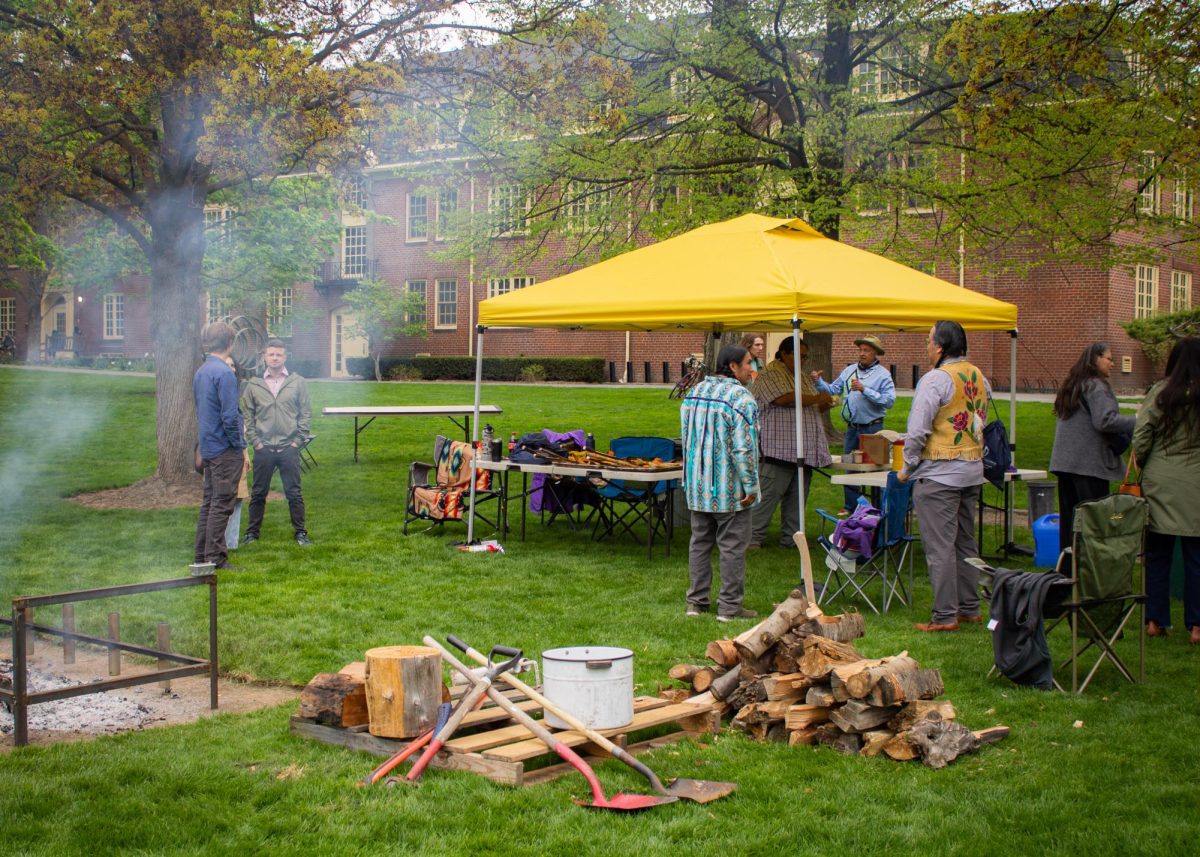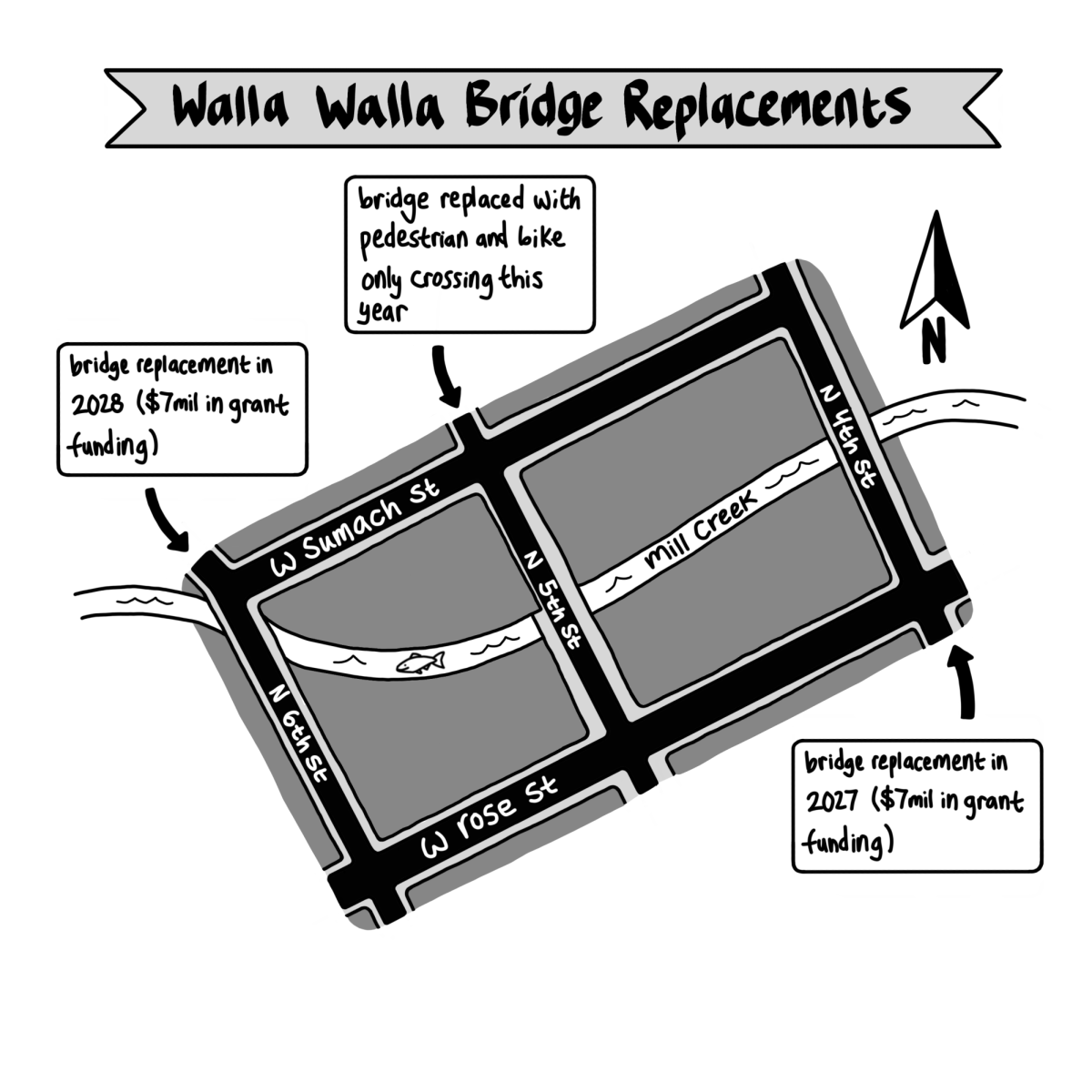It’s not easy being green, especially for a small city in eastern Washington. For instance, water use, land zoning and city planning are all hotly disputed in the valley.
The Walla Walla river basin has rich water resources year round because of the many tributaries to the Walla Walla river flowing from the Blue Mountains. Plenty of water, soil fit for agriculture and proximity to the timber resources in the mountains made this place a bustling town early on.
Some of the oldest water rights in the state of Washington can be found around Walla Walla. Rights to use water for farming, household and industrial purposes in Washington are allocated according to the “first in time, first in right” principle. People who have historically used water are entitled to it.
Water could also be very destructive, as was proven in 1931, when Mill Creek sent its excess water rushing down the city’s streets.
The creek was channeled throughout the city and levees built along its sides. In 1942 the Army Corps of Engineers built Bennington Dam to divert flood water from Walla Walla.
There is a long tradition of citizen involvement in promoting the well-being of the people of Walla Walla. Pioneer Park, located less than a mile from the Whitman College campus, was established by a women’s service club in the first decade of the 20th century.
Significant environmental conservation efforts in the area started in the 1990s in connection with the dispute over the endangered spotted owl and logging of the old growth forests that the birds inhabited.
The spotted owl habitat was put under protection, much to the disapproval of the loggers.
“Habitat protection east of Cascades was very successful. Logging of old growth forests was reduced by 90 percent,” said Judith Johnson, who worked with the Audubon Society’s Blue Mountain Chapter at the time of the controversy.
Forest conservation had a larger impact than preservation of an owl species.
“The endangered species was the salmon, not the spotted owl,” said Johnson, who is now the program coordinator for Kooskooskie Commons, an organization dedicated to promoting dialogue among the Mill Creek and Walla Walla River water users.
Water diversion from the Mill Creek by the City of Walla Walla and other land users along the river leave water levels very low during the summer months, which reduces the survival rates of spawning salmon and other fish.
Several groups besides Kooskooskie Commons work to enhance the fish habitat. Walla Walla Basin Watershed Council is responsible for the part of Walla Walla river basin that is located in Oregon.
Tri-State Steelheaders is a regional fisheries enhancement group that has grown from being a fishing club into fish habitat protection and improvement organization.
Walla Walla Watershed Alliance aims to create dialogue between groups in order to find solutions. Watershed Alliance is a major supporter of the Water and Environmental Center currently under construction at the Walla Walla Community College.
Washington State Department of Ecology, which is in charge of maintaining the minimal water flow in the river for fish survival, has noticed the high level of cooperation in the Walla Walla valley.
“In most places it’s a fight; here that’s not happening,” said Jay Manning, director of the Department of Ecology, in an address to the Walla Walla Noon Rotary club in January.
As a pilot program for the state, water use has been left to the local users and interest groups to find out ways of providing the required stream flows in the river.
Urban growth attracts similar attention. Amidst the economic promises of growth, several developments have caused controversy, most notably the Pennbrook housing and hotel development at the east end of Walla Walla.
Walla Walla 2020, a citizens group, has challenged the growth stimulating practices of the Port of Walla Walla, an economic development agency with the authority to levy taxes in the county.
“How do people with very different values and backgrounds work together?” asked Amy Molitor, lecturer with Whitman’s environmental studies and athletics departments. “I think there is a commonality, but finding that core of understanding is the main challenge that Walla Walla faces.”
Both Walla Walla County and City are required to prepare a Comprehensive Plan accounting for development and maintenance of existing urban services. The plan has to be updated every 10 years and this year both governments are working on gathering public input for the scheduled updates.








